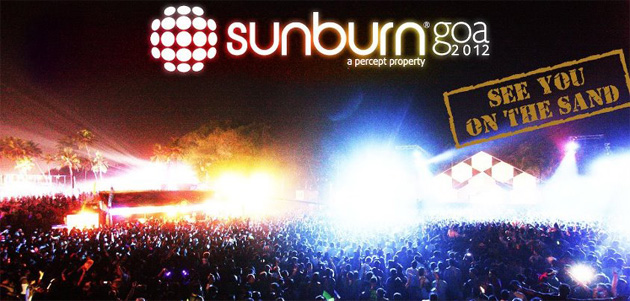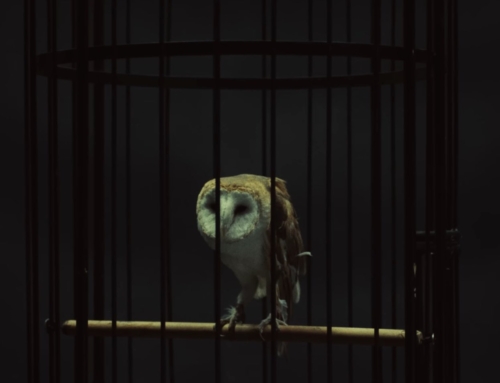 Sunburn has turned into the biggest electronic music festival in Asia, which has a growing market for the genre. As of 2012, the event already has multiple locations on the subcontinent, including in Mumbai, Noida, and Goa. The latter of these three just occurred on December 27 through the 29, but what’s unique, aside from a lineup of both international and Indian artists, is, the festival streamed for three days through Youtube.
Sunburn has turned into the biggest electronic music festival in Asia, which has a growing market for the genre. As of 2012, the event already has multiple locations on the subcontinent, including in Mumbai, Noida, and Goa. The latter of these three just occurred on December 27 through the 29, but what’s unique, aside from a lineup of both international and Indian artists, is, the festival streamed for three days through Youtube.
Festival organizers have a three-year association contract with the streaming video website. The two entities previously partnered in 2010 and ’11.
Now in its sixth year, Sunburn Goa drew over 150,000 concertgoers during its three days, with an additional 1.2 million from more than 120 countries viewing the streamed footage. We watched the broadcast, and here are our impressions.
Day 1
What appears to be an ordinary music festival in the same vein as countless European and North American events is quickly dissipated by the first act filmed. JES, a singer and producer, seems, on the surface, mimicking the early ’00s electro acts – think Ladytron and ADULT – but her house-trance hybrid sound and full vocals give the colder vibe from a decade ago far more warmth. JES, additionally, dabbles in dubstep – a reoccurring attempt seen by other performers during this day.
BT, now better known for his scoring attempts, follows. Taking a cue, it appears from Pretty Lights’ live sets, BT is accompanied on stage by a live drummer, who, at times, is superfluous to the DJ’s harder, big-beat trance style.
In another instance of trance artists leaving their genre behind, Sander Van Doorn does more than experiment with dubstep. He, while going through a distinct harder house set, fully immerses himself in it. Although, at U.S. festivals, Doorn unfortunately gets lumped into the A State of Trance crowd, his Sunburn Goa set shows he has far more edge and depth.
But, while BT, JES, and Van Doorn show that even trance and house performers can try on a little dubstep and do it successfully, other acts broadcast from Sunburn Goa Day 1 have a more experimental slant. Techno duo Spektre, for instance, offered up a terse, futuristic set, harder and grittier than the two acts preceding them, while the Japanese Popstars’ DJing introduced a string of glitchy, abstract house to a smaller crowd.
Less familiar to U.S. audiences, though, is Avalon, part of London-based act Killerwatts. Although his set opened with sounds reminiscent of 1990s’ Hi-NRG and Eurodance, it quickly took a turn into darker, techno and futuristic psy-trance textures.
Closing out Day 1 was Norman Doray, who has previously played with Swedish House Mafia in Ibiza. This aspect was reflected in his set, generally unremarkable contemporary house consisting of tracks easily identifiable by the audience.
Day 2
Overall, Sunburn Goa Day 2 juxtaposed traditional with contemporary sets and run-of-the-mill sounds with experimentation.
Psy-trance artist Atmos lulled listeners in with a traditional DJing set of beautiful arpeggiated melodies that, over the course of nearly an hour, gained an edge and momentum. Similarly, second act of the day, Global Underground artist Paul Thomas, took a low-key approach, without big bass drops breaking up a traditional set of house. But, while Atmos and Thomas were more rhythmic in their offerings, Joof opened with sizzling synths, and throughout the course of his set, one melodic theme smoothly transitioned to the next.
The first bigger act broadcast on Day 2, Fedde Le Grand is one of the few performers to meld modern sensibilities (that anthemic melody or track everyone recognizes, for instance) with a steady flow. Compared to past performances, Le Grand’s Sunburn Goa set was more subdued and relied, for a significant part, on mashups. But, Le Grand’s fast fingers and movement show he’s the real deal as a DJ – not a producer standing up and pressing a space bar – and simply watching him behind the decks is an interesting experience.
If Le Grand pulled back a bit too much, Richard Durand amped up the cacophony. From the start, his rough, glitchy techno with dispersed trance elements and dark, atmospheric synths had, perhaps, the greatest variety and depth of the evening.
Much like Day 1, Day 2 closed with big progressive house acts. Showtek’s rough opener segued into melodic synths and winding bass lines. Unfortunately, a shouting MC adding nothing to the set, and the same “hands in the air” vibe eventually took over. W&W followed, and while their latest single “Lift Off” showed promise, their live set was nothing exceptional. Much like other newer groups, the duo stuck with their own tracks, which displayed the similar retro-futuristic dichotomy of “Lift Off.” On stage for roughly a half hour, W&W were cut off before their set finished.
Day 3
If Days 1 and 2 appeared like iterations of the European/North American festival format, Day 3 skewed more toward prominent Indian performers and traditional sets – none of the interchangeable “drop the bass” and “hands in the air” 45-minute festival slots characterized by poor pacing. Although the first hour of footage had stops and starts, along with technical issues, the first two performers were solid. Fibre Storm, a newcomer leaning more toward darker techno, set the tone for the evening, and following was DJ Mash, India’s No. 1 DJ, with a progressive house and techno set. Appearing unaffected by the house music trends in the western world, DJ Mash spun a continuous flow of beats, with the occasional melody or vocal sample weaving through.
If Fibre Storm and DJ Mash gave a standard, steady opener, Hilight Tribe, a natural trance act from France, was anything but typical. Their percussion-based act displayed the complexities of electronic music and offered a sound practically unheard of in the U.S.
Continuing the traditional vibe for the evening were Ash Roy, an Indian DJ who has had residencies in both South Asia and Dubai over the past 15 years; Sunnery James and Ryan Marciano; and Pearl, another club DJ who’s at the forefront of India’s electronic music scene. All three had traditional, organic sets not marred by fist-pumping and bass drops. Pearl, on the other hand, gave hers a melodic slant, of swirling sizzling synths at the forefront and vocals weaving in and out of the mix. Roy and the Dutch duo, on the other hand, offered up percussive, darker sets with the occasional sample breaking up or adding to the flow.
Closing out the evening was Roger Sanchez, who gave a standard, if not somewhat smooth and sensual set, of melodic house. Sanchez, it appeared, is able to fill up the floor while dropping and proceeding to alter a melody – either his own (2001’s “Another Chance” finished the set) or another artist’s.
Overall Impressions
Sunburn Goa 2012’s lineup of Indian and international acts, which performed across seven stages, breaks up the stalwart lineups seen at festivals across Europe and North America, but unfortunately, the live broadcast only captured a snippet of the total. Out of the many performers skipped over were Paul Van Dyk – one of the major acts highlighted by the Times of India — and the Grand Finale on Day 3, which featured 30 performers. On the other hand, acts receiving camera time came from a variety of genres and styles, many of which broke out of the standard house-trance-dubstep trifecta seen across many other large festivals.
Additionally, the emphasis on traditional DJing was a bonus – and a quality that’s gradually being lost at U.S. and European festivals’ main stages for a rock concert-like vibe.
As far as the broadcast itself was concerned, technical difficulties broke up the overall flow, including various cuts to a blank screen. Previous footage of other Sunburn events, including for nearly 30 minutes starting and ending Day 1, meant that current performers weren’t getting screen time. On the other hand, the quality of the broadcast performers was generally clear, although the sound cut out at various points.
If you didn’t get a chance to watch the broadcast, all three days can still be watched below:




